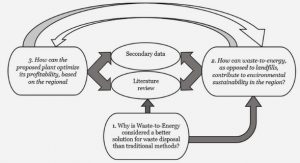Get Complete Project Material File(s) Now! »
Cross-Sector Social Partnership
To believe that an organization is like an island, without any interplay with other actors, is in today’s business climate unrealistic. According to Parmigiani and Rivera-Santos (2011), partnerships are a necessity for organizations to grow and survive. Since early 21th century, partnerships between different sectors have increased exponentially to tackle sustainability issues (Grey & Stites, 2013). Cross-sector social partnership is a form of partnership which appears if there is a collaboration between actors from at least two of the organizational categories of public-, private-, and third sector, solving social issues such as poverty, pandemics and environmental degradation (Maon, Lindgreen, & Vanhamme, 2009). The importance of such partnerships has been emphasized by organizations such as the United Nations (UN) and the World Bank Group (Glasbergen, Birman & Mol, 2007). By collaborating and using different sectors’ strengths, weaknesses can be eliminated (Bryson, Crosby & Stone, 2015), as other actors might possess complementary resources such as technology, relationships and expertise (Demirag, Khadaroo, Stapleton & Stevenson, 2012).
Climate Council of Jönköping
In Sweden, CAB of Jönköping was one of the first counties to create a CSSP, and it was titled the Climate Council of Jönköping (CC – Klimatrådet). Its sustainability goal is higher than that of the Government of Sweden (A. Olsson, personal communication, February 9, 2017). CC was formed by the CAB of Jönköping and consists of over 50 actors, from public-, private-, and third sector. Based on sustainability goals set by the Government and CAB of Jönköping, CC’s role is to organize and plan regional climate operations by identifying and executing actions which mitigate climate effects. The vision is to increase the renewable energy use by year 2050 and not only be a renewable energy self-sufficient county, but also have an energy abundance, due to less consumed energy than produced. This will be achieved through supporting and empowering organizations and individuals which today face environmental challenges and complex effects of climate change (Olsson, 2016). Among other tasks, CAB of Jönköping is responsible for the marketing and distribution of governmental funds of solar cell for households. Recent statistics show that, among Sweden’s 21 counties, the Jönköping region has the second highest appropriations per citizen (Swedish Energy Agency, 2017a).
Sustainability
Sustainability, as a concept, originates from the conservatism and preservation movement during the 19th century, and then evolved further during the 20th century through an environmental movement (Thiele, 2013). The term sustainability was first presented 1972 in “Blueprint for Survival” published in the United Kingdom, where the future of mankind was discussed (Kidd, 1992). The same year, in Stockholm, UN held their first conference on sustainable development “UN Conference on the Human Environment” (UN, 2017c). Kidd (1992) states in his book “The Evolution of Sustainability”, the term has its roots in many equally valid strains, that are diverse and incompatible, and therefore there should not be only one interpretation. On the contrary, Giovannoni and Fabietti (2014) emphasize that a clear definition is key for the concept to be useful. The most popular definition can be found in the Brundtland Report that was composed 1987 by the World Commission on Environment and Development: “Development is considered sustainable if it meets the needs of the present without compromising the ability of future.” (Drexhage & Murphy, 2010, p. 2). Another frequently used definition is derived from the Triple Bottom Line (TBL), where three aspects are taken into consideration; environmental quality, social justice and economy prosperity, which all are considered as equally important and the three most common parts of sustainability (Elkington, 1997).
Cross-Sector Social Partnership
According to a range of scholars, cross-sector social partnership is a growing phenomenon both within literature and in practice (Bryson, et al., 2015). The term has arisen from cross-sector partnership (CSP), which Bryson, Crosby and Stone (2006) define as “the linking or sharing of information, resources, activities, and capabilities by organizations in two or more sectors to achieve jointly an outcome that could not be achieved by organizations in one sector separately” (p. 44). Selsky and Parker (2005) further argue that CSSP is CSP addressing social issues such as environmental problems, poverty and education. Today CSSP is a vital and favourable strategy within the organizational setting (Koschmann, Khun & Pfarrer, 2012). Hence, there is an interest in the potential development, which can be created through CSSPs (Selsky & Parker, 2005). Forsyth (2010) states that climate change cannot be solved without involving actors from all corners of society and in many urgent situations CSSPs might be the only solution. Traditionally, policies regarding global climate issues are often addressed on international and federal level, but expected to be experienced and most efficient tackled on a local level (Ostrom, 2012).
Cross-Sector Social Partnership Framework
About a decade ago, Bryson et al. (2006) conducted research on current cross-sector social partnership theories, which was part of an initial phase of what was going to be a rapid growth and recognition of the topic, within both theory and practice (Bryson et al., 2015). The article has been highly cited by other scholars, and to update their own framework with the latest research, in 2015 the researchers again investigated scholars theoretical- and empirical findings. By reviewing the CSSP literature from the previous decade, and combining it with the 2006 findings, the authors presented a new and refined CSSP framework. To create the framework, the authors reviewed 196 articles and three books published between 2007 and 2015, which included keywords with a focus on cross-sector collaboration and partnership. The objective of the framework is to help public managers, as well as integrative leaders from any sector, to design an efficient and successful CSSP. The CSSP framework (Figure 1) consists of seven major categories which in the sections below are described in consecutive order, starting with general antecedent conditions, and ending with accountabilities and outcomes (Bryson et al., 2015).
Collaborative Processes
According to Bryson et al. (2015), the collaborative processes unite organizations and makes it possible for actors to establish comprehensive structures, a shared vision, and to handle power imbalances. Structures make it possible to ease governance of the cross-sector social partnership and implement partners’ agreements. Trust, is one of the main components of the collaborative process and is often described as the core of CSSPs. Within a CSSP, trust is built by sharing resources such as information and competences as well as showing commitment and good intentions. It is also something which needs to be constantly maintained. The authors also highlight the importance of communication between CSSP actors, and that negotiations and constructions are vital for its existence. Hence, it is communication which makes the rise and survival of CSSP possible. Another important component of the collaborative processes is legitimacy, and in a CSSP, it refers to the degree of engagement of actors. For example, if all voices are heard in decision-making situations, if there is a mutual understanding among the actors, and if there is an acknowledgement of interdependence.
Table of Contents :
- 1. Introduction
- 1.1 Background
- 1.1.1 Cross-Sector Social Partnership
- 1.1.2 Climate Council of Jönköping
- 1.1.3 Problem
- 1.2 Purpose
- 1.3 Delimitations
- 1.4 Definitions
- 2. Literature Review
- 2.1 Sustainability
- 2.2 Partnership
- 2.3 Cross-Sector Social Partnership
- 2.4 Cross-Sector Social Partnership Framework
- 2.4.1 General Antecedent Conditions
- 2.4.2 Initial Conditions, Drivers and Linking Mechanisms
- 2.4.3 Collaborative Processes
- 2.4.4 Collaboration Structures
- 2.4.5 Intersections of Processes and Structure
- 2.4.6 Endemic Conflicts and Tensions
- 2.4.7 Accountabilities and Outcomes
- 2.5 Sustainability Goals
- 2.5.1 The United Nations
- 2.5.2 The Government of Sweden
- 2.5.3 County Administrative Board of Jönköping
- 2.5.4 Climate Council of Jönköping
- 2.5.5 The Multinational Corporations of the Climate Council of Jönköping
- 3. Methodology & Method
- 3.1 Methodology
- 3.1.1 Research Purpose
- 3.1.2 Research Philosophy
- 3.1.3 Research Approach
- 3.1.4 Research Strategy
- 3.2 Method
- 3.2.1 Secondary Data
- 3.2.2 Primary Data
- 3.2.3 Observation Criteria
- 3.2.4 Interview Design
- 3.2.5 Data Analysis
- 3.1 Methodology
- 4. Empirical Results
- 4.1 Observational Research and Interviews
- 4.1.1 Actors’ Involvement at Meetings of Climate Council of Jönköping
- 4.1.2 The Multinational Corporations’ Contributions to the Climate Council of Jönköping
- 4.1.3 General Antecedent Conditions and Triple Bottom Line
- 4.1.4 Initial Conditions, Drivers and Linking Mechanisms
- 4.1.5 Collaborative Processes
- 4.1.6 Collaborative Structures
- 4.1.7 Intersections of Processes and Structure
- 4.1.8 Endemic Conflicts and Tensions
- 4.1.9 Accountabilities and Outcomes
- 4.1 Observational Research and Interviews
- 5. Analysis
- 5.1 Research Question
- 5.1.1 General Antecedent Conditions and Triple Bottom Line
- 5.1.2 Initial Conditions, Drivers and Linking Mechanisms
- 5.1.3 Collaborative Processes
- 5.1.4 Collaborative Structures
- 5.1.5 Intersections of Processes and Structure
- 5.1.6 Endemic Conflicts and Tensions
- 5.1.7 Accountabilities and Outcomes
- 5.1 Research Question
- 6. Conclusion
- 7. Discussion
- 7.1 Method Discussion
- 7.1.1 Limitations
- 7.2 Theoretical and Empirical Contributions
- 7.3 Implications
- 7.4 Further Research
- References
- Appendices
GET THE COMPLETE PROJECT
Joining Forces A Study of Multinational Corporations’ Sustainability Contributions to a Cross-Sector Social Partnership






